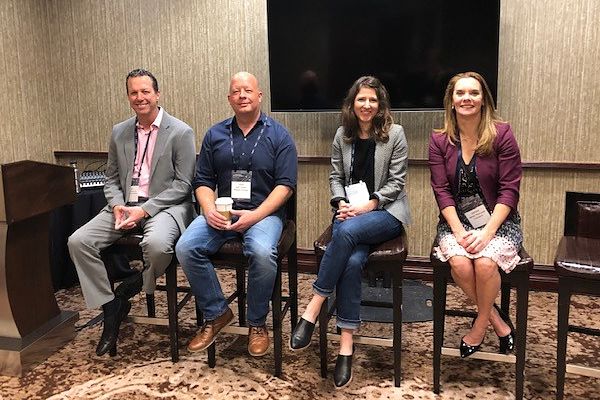The Practice-Research Bridge: Do Marketing Practitioners Read Academic Research?

Do marketing practitioners read academic research to inform their work?
At the Winter Academic Conference of the American Marketing Association held in February in Austin, Texas, we put this question to the test. At a SAGE-sponsored panel discussion moderated by AMA’s managing editor, Sarah Steimer, four Austin-based marketing professionals discussed how they stay up-to-date on the latest marketing strategies and research, the place of research-based recommendations over others, and tips for researchers who want to make an impact in practice.
Panelists included Angie Gette, vice president of digital strategy & planning at Springbox; Jamie Matusek, president of Catalyst; Jed Jones, co-founder & chief data scientist at Mindecology; and Jeff Raymond, executive director of client engagement at Launch Marketing.
What marketing problems are practitioners trying to solve?
For our panelists, these were tops on their lists: Dealing with disruptions and change; finding the right data to meet their business needs; using the right data correctly; getting value out of technology; determining how customers are engaging in the marketplace and how to get their attention.
How much do these practitioners actually utilize research produced by scholars?
While some of the panelists admitted that they weren’t even aware that so much research existed, others talked about the need to be able to tap into “digestible bites” of research in order for it to be helpful. Practitioners need to be able to “grab and go” between projects which may require researchers “marketing to marketers.” All agreed that it’s important to look at the next generation coming into marketing practice in order for research to make a full impact.
Is there an optimum way for researchers and practitioners to reach other?
They all agreed there is a need for a medium to connect, but were unsure on what that might look like. Stressing their lack of time, the pros admitted they have data, but are not always able to comb through it. Marketing is fast and agile, so they are looking for quick insights they can use with their clients (should be digital, use infographics, provide quick hits – no time to read long articles). Ideas for how to reach them included LinkedIn and possibly a crowd-sourced ratings system for publications that they could consult to know what’s useful. Ultimately there is a need to communicate the value of partnerships between researchers and practitioners.
The panelists had tips for researchers who make requests to pros: Instead of sending a general email that looks like a form letter, tell us “I know who you are,” be clear about what you want out of this relationship and explain how your request will be mutually beneficial, tell what’s the payoff (i.e. you will get results in X days); show you want a partnership vs. getting the organization to use your product; show examples of pros like me and how they were helped by research. After working with a practitioner, have the pro help package your results.
What do you wish graduating students would be equipped to offer as new employees?
Our panelists thought of students they have hired who exhibited these characteristics and definitely stood out from the rest of the applicants: Comfort with data and ability to verify credibility; strategic thinkers; able to work autonomously and do quality work (managers don’t have time to redo work). The best new employees, they said, see a problem in the business, bring forth a solution and take ownership. Finally, one noted that an MBA changes your brain – she sees the difference in MBA graduates applying for jobs.
We are thankful to our outstanding panelists and the American Marketing Association for this insightful discussion.




















































































